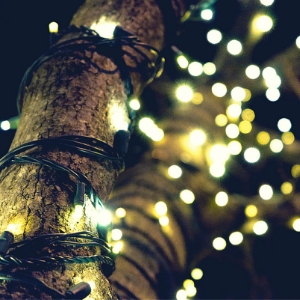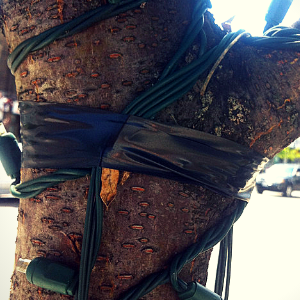
Holiday lights, Christmas lights or fairy lights; no matter the name, outdoor decorative lighting is everywhere throughout the December holidays and beyond.
There are few scenes more representative of the season than walking down a street lined with twinkling trees lit up throughout the cold nights. Though beautiful, decorative lighting, when left on too long, girdles the tree and causes long-term, life-threatening damage.
What is girdling?

Let's consider the biology of trees. Trees have living tissue immediately below the bark which, among other things, transports water, oxygen and nutrients. A tree’s ability to transport these crucial elements becomes compromised when something restricts this flow, such as when a foreign object is wrapped tightly around it.
Trees put on a ring of growth each year. In less time than expected, the tree will grow wider. So, what was once loose becomes snug. Eventually, the tree will grow around the foreign object and the pathways channelling the water, oxygen and nutrients will be cut off. This is called girdling and it is seriously destructive and eventually fatal to trees.
The solution to this problem is simple. Remove holiday decorations and lighting well before the growing season begins. We recommend that by the end of January, any decorations or lighting should be removed to provide optimum protection for trees. The urban forest will thrive when all of us help to manage our local trees with care!
Daniela Serodio is the Marketing and Communications Intern at LEAF.
LEAF offers a subsidized Backyard Tree Planting Program for private property. The program is supported by The Town of Newmarket, The Regional Municipality of York, City of Toronto, Toronto Hydro, Town of Ajax, and Ontario Power Generation. For details on how you can participate, visit http://yourleaf.org
